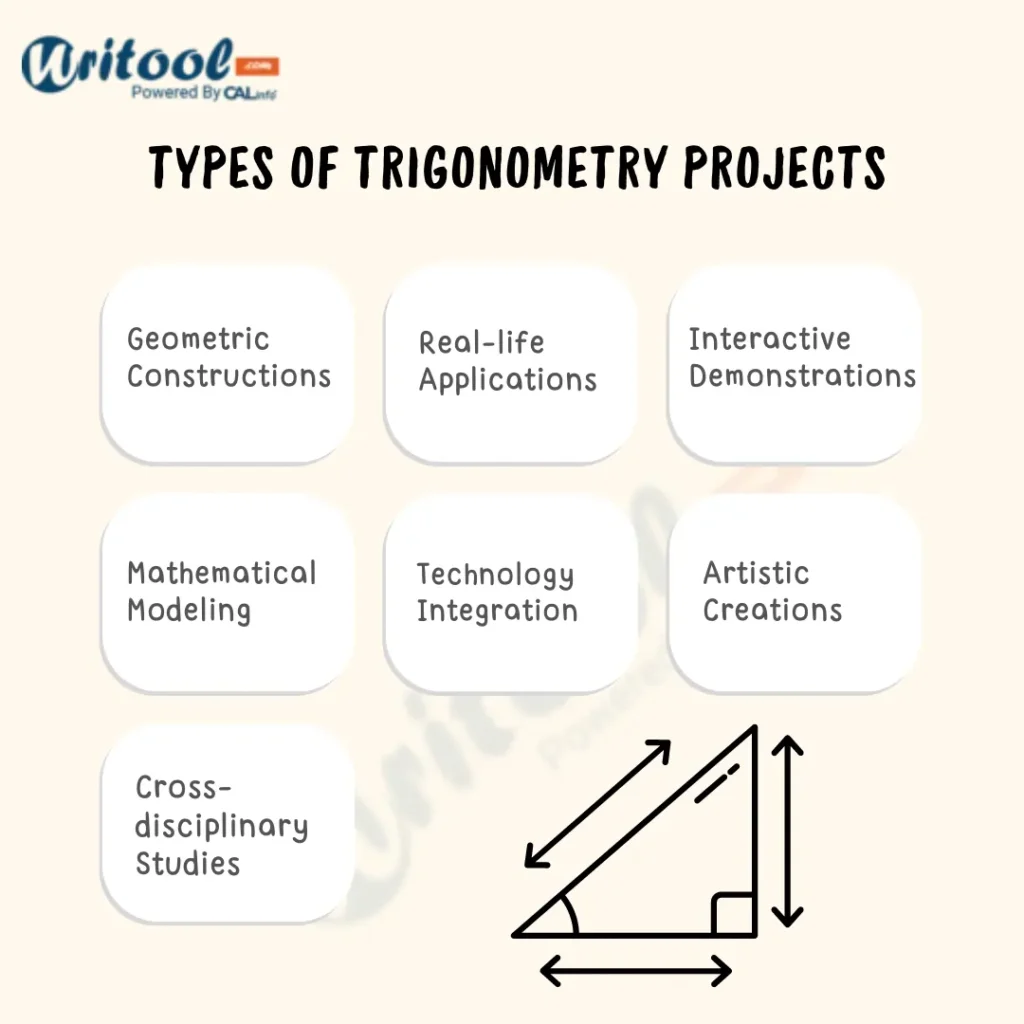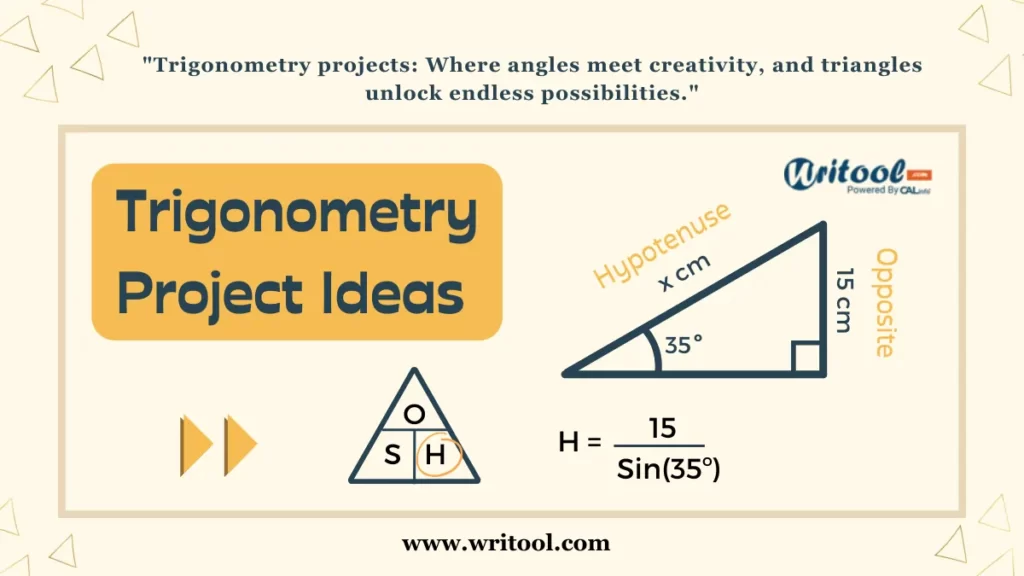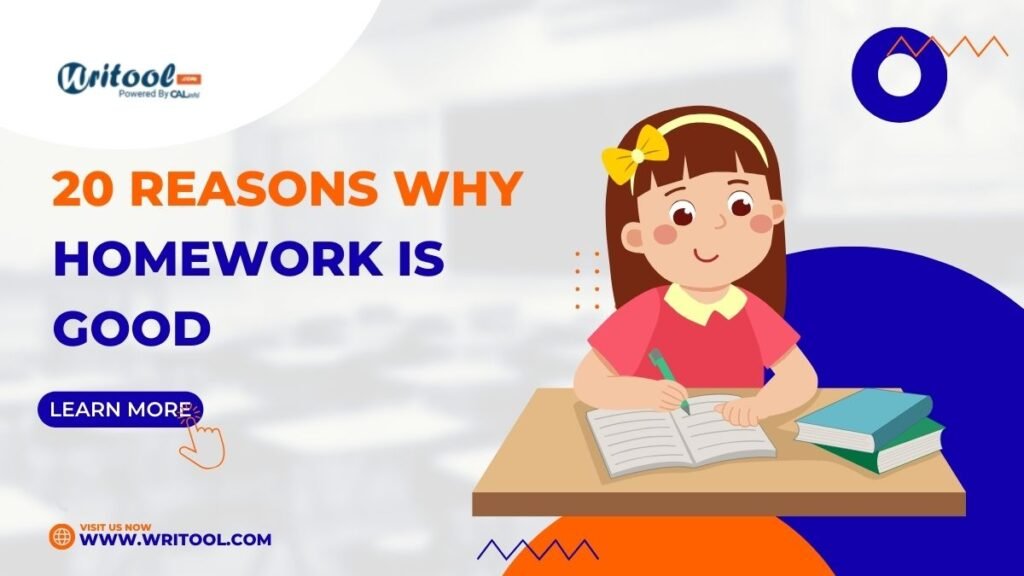Are you looking for cool trigonometry project ideas for school or college? Trigonometry is a big part of math that helps us understand angles, shapes, and how things move around us. These project ideas are about more than just solving math problems. They’re about doing fun stuff that shows how math works in real life!
Trigonometry is super helpful in lots of real-world stuff, like building things and making art. And guess what? You can use it to create extraordinary patterns, understand music, or even build robots!
If you’re into math or science or just curious about how math affects our world, check out these awesome project ideas. They’ll make learning math a fun adventure, and you’ll get to explore triangles, angles, and patterns in a whole new way!
You May Also Like: Interesting Taxation Project Ideas
What Is Trigonometry Project Ideas
Trigonometry Project Ideas revolve around exploring angles, shapes, and movements using mathematical concepts. These ideas showcase practical applications of trigonometry in various fields, such as architecture, art, robotics, and music. Students engage in hands-on activities, experiments, and real-world scenarios, unraveling the intriguing aspects of triangles and angles.
These projects overcome any barrier between theoretical learning and practical execution, offering an immersive encounter to understand geometry’s job in forming our environmental factors. By diving into Trigonometry Project Ideas, students comprehend numerical ideas better and witness the intriguing ways math interlaces with daily life.
Types of Trigonometry Projects
Trigonometry projects encompass a diverse range of engaging activities catering to various interests and educational levels. Some common types include:

1. Geometric Constructions
Projects involving creating shapes, patterns, or designs using trigonometric principles, such as constructing geometric art or intricate designs based on trigonometric functions.
2. Real-life Applications
Exploring how trigonometry is used in practical scenarios, like architecture, engineering, astronomy, or surveying, by creating models or simulations that demonstrate these applications.
3. Interactive Demonstrations
Projects focusing on interactive demonstrations or experiments that visually represent trigonometric concepts, such as models displaying sine and cosine functions or experiments showcasing trigonometric ratios.
4. Mathematical Modeling
Creating mathematical models to solve real-world problems using trigonometry, like analyzing motion, waves, sound, or harmonic motion, integrating math with physics or engineering.
5. Technology Integration
Projects involving the use of technology, such as programming trigonometric functions in software, designing games or simulations, or exploring trigonometry in robotics.
6. Artistic Creations
Exploring the artistic side of trigonometry by creating visual arts, sculptures, or music compositions inspired by mathematical patterns or principles.
7. Cross-disciplinary Studies
Projects integrating trigonometry with other subjects, such as trigonometry’s role in biology, economics, geography, or environmental studies, showcasing its interdisciplinary nature.
Importance of high school precalculus trigonometry project ideas
High school precalculus trigonometry project ideas hold significant importance in the educational landscape for several reasons:
- Application of Concepts: Projects allow students to apply theoretical concepts practically, fostering a deeper understanding of trigonometry beyond equations and theorems.
- Engagement and Interest: Innovative and intelligent ventures enhance students’ advantage, making learning geometry pleasant and engaging while empowering investigation and revelation.
- Real-world Relevance: Projects often mirror real-life applications, exhibiting how geometry is utilized in different fields, such as design, craftsmanship, and innovation, and demonstrating its importance.
- Critical Thinking and Problem-solving: Tasks require decisive reasoning, critical thinking, and logical abilities, empowering students to handle complex numerical difficulties and determine arrangements.
- Interdisciplinary Connections: Incorporating geometry with different subjects exhibits its associations with assorted fields, underlining its multidisciplinary nature and expanding students’ viewpoints.
- Practical Learning: Practical projects offer experiential learning potential to open doors, permitting understudies to picture, try, and apply mathematical ideas, supporting appreciation.
- Skill Development: Through project work, students upgrade their innovativeness, correspondence, and collaboration and show abilities imperative for their intellectual and expert development.
- Long-term Retention: Participating in project-based learning helps with the long-term maintenance of ideas, as students effectively participate in developing information through investigation.
List of 27+ Most Creative Trigonometry Project Ideas for Students In 2024
Following are the 27+ Most Creative Trigonometry Project Ideas for Students In 2024.
1. Creating Trigonometric Art
Art meets mathematics in this engaging project where students use trigonometric functions to design captivating geometric patterns. By plotting graphs of sine, cosine, or tangent functions, students create mesmerizing artworks showcasing the beauty of mathematical curves.
2. Trigonometry in Architecture
Explore the architectural marvels shaped by trigonometry. Students can investigate famous structures, understanding how angles, slopes, and trigonometric principles influence architectural designs like pyramids, domes, or arches.
3. Modeling Trigonometric Functions
Constructing physical models illustrating sine and cosine functions provides a tangible understanding of periodicity and amplitude. Students can create interactive models using simple materials to visualize these abstract mathematical concepts.
4. Trigonometry and Music
Merge mathematics and music by delving into the harmony of trigonometric waves and musical tones. Analyzing sound waves through trigonometric functions demonstrates the mathematical foundation underlying musical notes and chords.
5. Building a Trigonometry Puzzle
Challenge peers with a custom-made trigonometry puzzle that integrates problem-solving with mathematical concepts. This project encourages critical thinking and fosters a deeper understanding of trigonometric identities and equations.
6. Trigonometry and Robotics
Enter the world of robotics by designing a robotic arm that operates using trigonometric principles. Students learn to program and control the arm’s movements, applying trigonometry to create precision in robotic actions.
7. Exploring Trigonometric Ratios
Engage in hands-on learning by conducting experiments that demonstrate trigonometric ratios using tools like protractors and measuring tapes. This interactive approach solidifies understanding and application of sine, cosine, and tangent functions.
8. Trigonometry in Photography
Capture the essence of trigonometry in photography. Investigate how angles and perspectives influenced by trigonometric principles contribute to capturing captivating images, demonstrating the relationship between mathematics and art.
9. Trigonometry in Game Development
Develop an interactive computer game incorporating trigonometry. From designing character movements to implementing in-game physics, students apply trigonometric concepts to create immersive gaming experiences.
10. Building a Trigonometry Board Game
Craft an educational board game where players navigate through trigonometric challenges. This fun and interactive project encourage teamwork, critical thinking, and an intuitive understanding of trigonometric functions.
11. Trigonometry and Sound Waves
Explore the realm of sound through trigonometry by understanding the mathematical patterns behind different frequencies and wavelengths. Students investigate how trigonometric functions relate to the physics of sound.
12. Trigonometry and Virtual Reality
Step into the world of virtual reality and explore its mathematical underpinnings. Understand how trigonometry is used to create immersive VR experiences, offering insights into angles, perspectives, and 3D modeling.
13. Trigonometry in Finance
Discover the application of trigonometry in financial mathematics. Students explore concepts like compound interest, amortization, and annuities, showcasing the relevance of trigonometry in managing finances.
14. Trigonometry and Cryptography
Decode the secrets of cryptography by understanding how trigonometry contributes to encryption and decryption techniques. Students explore the role of trigonometric functions in securing data and communication.
15. Trigonometry and Bridge Building
Dive into civil engineering by exploring the role of trigonometry in designing and constructing bridges. Analyze how angles, forces, and structures are calculated and implemented in bridge architecture.
16. Trigonometry and Environmental Studies
Connect trigonometry with environmental studies by analyzing its role in determining land areas, measuring altitudes, or understanding climate patterns. Students explore practical applications of trigonometry in environmental sciences.
17. Trigonometry and Medical Imaging
Explore how trigonometry aids in medical imaging techniques like CT scans or MRI machines. Understand the mathematical concepts behind imaging technology used in healthcare.
18. Trigonometry and Time Measurement
Investigate time measurement systems, such as sundials or hourglasses, and their relationship with trigonometric concepts. Students delve into angles, shadows, and timekeeping devices.
19. Trigonometry in Agriculture
Study the application of trigonometry in agricultural practices. Explore concepts like land surveying, irrigation layout, or analyzing land contours using trigonometric principles.
20. Exploring Trigonometry through Historical Artifacts
Examine historical artifacts or monuments and investigate how ancient civilizations applied trigonometric concepts in their architecture or design.
21. Trigonometry and Satellite Navigation
Understand the trigonometric principles behind satellite navigation systems like GPS, exploring how satellites calculate distances and locations.
22. Trigonometry and Chemistry
Explore the application of trigonometry in chemistry, especially in crystallography or molecular geometry, to understand the spatial arrangement of molecules.
23. Trigonometry and Physics Experiments
Conduct physics experiments involving harmonic motion, simple harmonic oscillators, or pendulum motion to illustrate trigonometric principles in physical phenomena.
24. Trigonometry and Human Anatomy
Investigate the application of trigonometry in understanding body mechanics or medical imaging techniques used in anatomical studies.
25. Trigonometry and Data Visualization
Utilize trigonometry to create visually compelling data representations, infographics, or charts that simplify complex information for better comprehension.
26. Trigonometry and Robotics Motion Planning
Delve into robotics motion planning algorithms that utilize trigonometric functions to compute robot movements in various scenarios.
27. Trigonometry and Economics
Analyze economic trends using trigonometric models or graphs, showcasing the application of mathematics in economic forecasting and analysis.
28. Trigonometry in Textile Designing
Explore how trigonometry shapes patterns and designs in textiles, understanding the geometric principles behind fabric weaving and motifs.
29. Trigonometry and Weather Forecasting
Study the role of trigonometry in meteorology, such as measuring angles of sunlight or calculating distances in weather prediction.
30. Trigonometry and Renewable Energy
Examine trigonometry’s application in harnessing renewable energy sources like solar panels or wind turbines, focusing on angles and energy efficiency.
Essential Things That Must Be Present In A Good Trigonometry Project Ideas & Topics
A good trigonometry project topic should encompass several essential elements to ensure its effectiveness and educational value:
- Relevance: The topic should relate to real-life applications or line up with students’ inclinations, making it relevant and locking in.
- Clear Objectives: Obviously characterized objectives and learning results assist students with understanding what they will accomplish through the undertaking.
- Incorporation of Trigonometric Concepts: The task ought to include crucial geometrical standards, showing their application and significance.
- Hands-on Approach: Empowering dynamic interest and active exercises permits students to connect straightforwardly with the ideas, supporting comprehension.
- Interdisciplinary Connections: Exploring associations among trigonometry and different subjects or fields improves its unique circumstance and pertinence.
- Creativity and Innovation: Projects that consider imaginative articulation or creative arrangements empower decisive reasoning and investigation.
- Practicality: The project ought to be doable inside the given assets, period, and students’ abilities.
- Problem-solving Opportunities: Giving difficulties or issues that require mathematical arrangements empowers decisive reasoning and critical thinking abilities.
- Clear Instructions and Resources: Clear rules, guidelines, and admittance to vital assets work with the smooth execution of the venture.
- Assessment Criteria: Clearly defined appraisal rules or rubrics assist with assessing students’ work in view of explicit learning goals and assumptions.
- Student Engagement: Projects should be designed to students’ advantage and inclusion in the interim.
Challenges Face By Students In Trigonometry Projects
Students undertaking trigonometry projects may encounter various challenges, including:
- Abstract Nature of Concepts: Trigonometry includes dynamic ideas like angles, proportions, and works, which a few students see as trying to imagine and get a handle on.
- Complexity of Equations: Students could battle with multifaceted conditions or equations, which can make it hard to understand and apply mathematical standards.
- Lack of Real-life Context: Students need help understanding how trigonometry ideas can be utilized in practical situations, which can upset their commitment and inspiration.
- Insufficient Foundation: Inadequate foundational knowledge in basic mathematics or geometry can pose challenges when advancing to trigonometry concepts.
- Fear of Failure: A feeling of dread toward committing errors or failing to address geometrical issues could frustrate students’ certainty and eagerness to investigate and learn.
- Limited Resources or Tools: The absence of admittance to fitting assets, devices, or innovations that work with involved learning can obstruct the profundity of understanding.
- Time Constraints: Adjusting the intricacy of geometry ideas with time imperatives in finishing activities can prompt surged or incomplete work.
- Difficulty in Visualization: A few students find imagining conceptual ideas like points, triangles, or charts testing, which can influence their comprehension.
- Ineffective Teaching Methods: Insufficient showing of approaches or techniques that neglect to take care of different learning styles can obstruct students’ perception.
- Limited Support or Guidance: Inadequate support or guidance from teachers or peers can make it challenging for students to navigate through trigonometry projects.
Conclusion
Trigonometry Project Ideas are like cool adventures into the world of angles and shapes. They help you understand math better and also make you think creatively. With these projects, you can do fun activities and see how math connects to real life.
Doing projects in trigonometry is like going on a fun journey where you learn new things and solve puzzles. You can connect math with other subjects like science, art, and even technology. It’s all about exploring and discovering the beauty of math in our world.
For teachers, guiding students through these projects and creating a supportive environment makes learning even more exciting. It’s all about making math fun and helping students love learning!
Frequently Asked Questions
Who is the father of trigonometry?
The “father of trigonometry” is often considered to be Hipparchus, an ancient Greek mathematician.
What are some real-world applications of trigonometry that I can explore in my project?
Trigonometry is used in architecture, engineering, physics, astronomy, and even video game design.
Can you suggest a trigonometry project suitable for the high school level?
Investigating the trigonometric ratios (sine, cosine, tangent) and their applications in solving right triangles could be a good project.
Are there any trigonometry projects that involve technology?
Yes, you could develop a project that utilizes trigonometry in computer graphics, such as creating animations or designing 3D models.
Are there any trigonometry projects suitable for advanced students or college level?
Advanced projects could involve topics like Fourier analysis, spherical trigonometry, or applications of trigonometry in calculus and differential equations.


